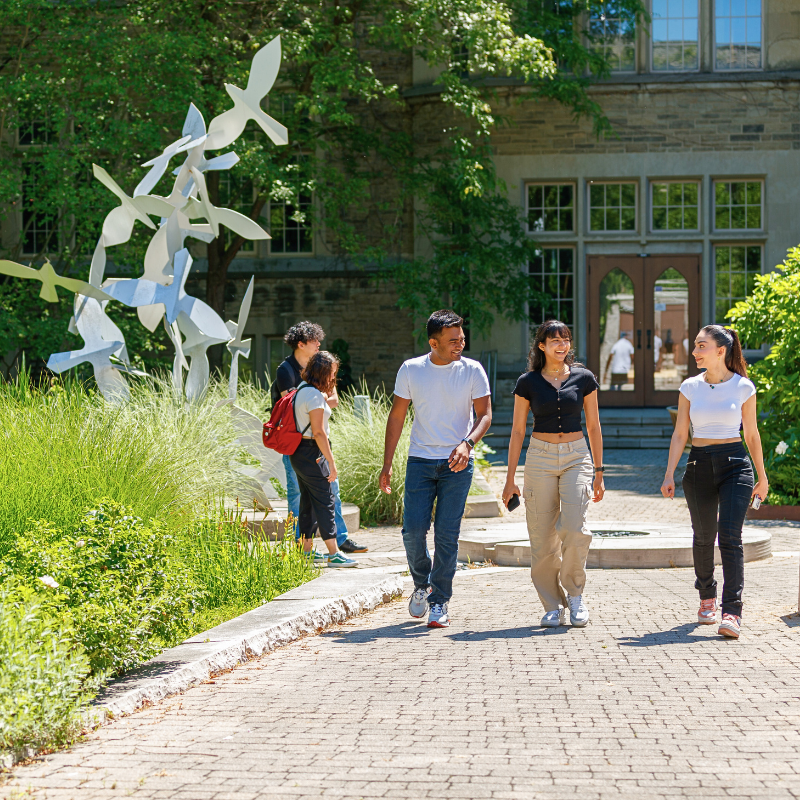Search Website
QUICK LINKS:

Equity
Recognize barriers and reimagine opportunity in education and research
Equity
Recognize barriers and reimagine opportunity in education and research

Equity
Recognize barriers and reimagine opportunity in education and research
Images of Equity vs. Equality:
Variations on an image distinguishing Equality from Equity with people watching a baseball game from behind a fence circulate widely on media.
Read University of Calgary Vice-Provost & Associate Vice-President Research (Equity, Diversity and Inclusion) Dr. Malinda Smith’s Twitter thread distinguishing Equality, Equity and Justice in relation to the lived experiences of equity deserving groups in the Canadian academy, with a variety of images, including the baseball game, to capture their differences. (And note that there is always more to learn: part-way through the thread, she begins to add alt-text to her images!)
Read University of Calgary Vice-Provost & Associate Vice-President Research (Equity, Diversity and Inclusion) Dr. Malinda Smith’s Twitter thread distinguishing Equality, Equity and Justice in relation to the lived experiences of equity deserving groups in the Canadian academy, with a variety of images, including the baseball game, to capture their differences. (And note that there is always more to learn: part-way through the thread, she begins to add alt-text to her images!)
Recognizing Barriers
A good first step in deepening equity is to recognize barriers. When you look at a researcher’s C.V. or a student’s application, how are you incorporating an equity lens into your interpretation of it?
Two vivid examples of inequity in research opportunities that shape academic records over an extended period of time have received attention recently.
Many more questions could be asked, once we start to recognize barriers, like: who can attend international conferences, given the additional costs and uncertainties associated with restrictive visa policies? These inequities were visible at the July 2022 International AIDS Conference held in Montreal, where hundreds of scientists and activists from Africa, Asia and Latin America were excluded.
The "hidden curriculum" refers to the "unwritten and unofficial lessons learners acquire implicitly and are not taught formally." Sometimes this phrase is also used to refer to skills that some students bring to their education (which they are rewarded for in their courses) but that not all students have had an equal opportunity to develop. Check out the large-scale project that our Western colleague Nicole Campbell led to provide resources to recognize and teach elements of the hidden curriculum.
When you look at a student’s application for an opportunity, what questions are you considering about who is more likely to have had particular kinds of opportunities or experiences that build their credentials?
Want to learn more about Equity on Canadian campuses? The Equity Myth: Racialization and Indigeneity at Canadian Universities, co-authored by Western Sociology's Howard Ramos.
Two vivid examples of inequity in research opportunities that shape academic records over an extended period of time have received attention recently.
- The COVID-19 pandemic laid bare gender inequities among academic researchers. As early as May 2020, it was becoming evident that female academics were submitting fewer manuscripts and starting fewer research projects than their male colleagues in the context of pandemic disruptions.
- And then a 2022 study of funding rates at the U.S. National Science Foundation uncovered decades of systemic racial disparities that compounded the advantage to white principal investigators and the disadvantage to racialized P.I.s
Many more questions could be asked, once we start to recognize barriers, like: who can attend international conferences, given the additional costs and uncertainties associated with restrictive visa policies? These inequities were visible at the July 2022 International AIDS Conference held in Montreal, where hundreds of scientists and activists from Africa, Asia and Latin America were excluded.
The "hidden curriculum" refers to the "unwritten and unofficial lessons learners acquire implicitly and are not taught formally." Sometimes this phrase is also used to refer to skills that some students bring to their education (which they are rewarded for in their courses) but that not all students have had an equal opportunity to develop. Check out the large-scale project that our Western colleague Nicole Campbell led to provide resources to recognize and teach elements of the hidden curriculum.
When you look at a student’s application for an opportunity, what questions are you considering about who is more likely to have had particular kinds of opportunities or experiences that build their credentials?
- Who can afford to take on unpaid internships or volunteer opportunities?
- Who has early opportunities to gain research experience?
- Who knows how to approach a researcher to seek opportunities in their research program?
- What options are you giving students to explain their journey and any interruptions or obstacles they have faced?
- Might they belong to the almost 25% of university students who identified as having a disability on the Canadian University Survey Consortium 2021 Graduating Student Survey? What would that look like on their academic record or resume?
- Becoming more aware of Equity issues through recognizing barriers can help to ensure that new barriers are not unintentionally being created.
Want to learn more about Equity on Canadian campuses? The Equity Myth: Racialization and Indigeneity at Canadian Universities, co-authored by Western Sociology's Howard Ramos.